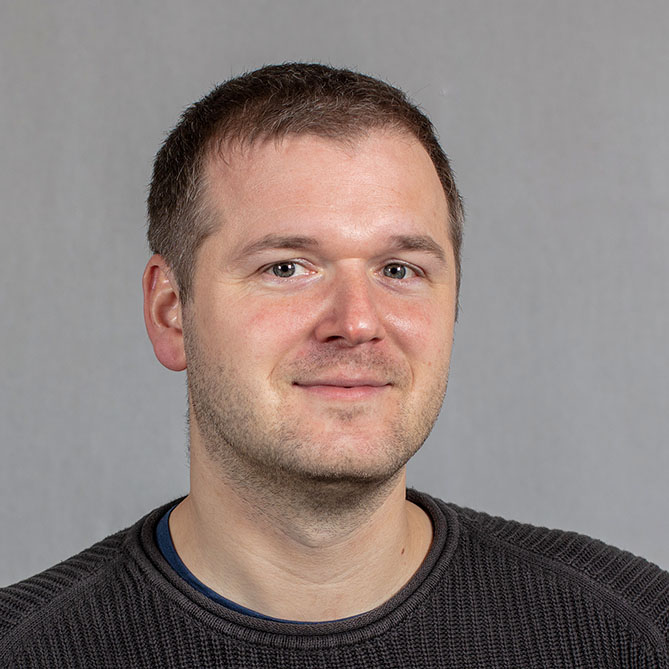Volker Bartenbach: “Have the courage to sometimes take a risk with your career”
ETH alumnus Volker Bartenbach completed his PhD in the Health Sciences and Technology Department at ETH. He is CEO of Auxivo AG, which develops exoskeletons for use in industry. Volker talks to us today about his career to date and his fascination with exoskeletons.

Did you have a dream job when you were a child?
Yes, I wanted to be an archaeologist. I was very excited by castle ruins and had always been interested in history.
What did you study originally?
I studied mechanical engineering, specialising in robotics, at the University of Karlsruhe (KIT) in Germany. I then worked in this field for two years. During this time, I became aware of wearable robotics. I was particularly interested in exoskeletons, which was still a relatively new field of research at that time. I then applied for a PhD at ETH, which is a world leader in this area.
Where does your interest in exoskeletons originate from?
As a passionate engineer, I am absolutely fascinated by the combination of different technical disciplines, such as mechanics, computer science and electrical engineering. In exoskeleton development, there are additionally biomechanical and medical aspects involved. If you combine all these subjects in a meaningful way, you can develop systems that directly assist and take the burden off people. These robots have a practical application, which is something I am very excited about.
What motivates you to help people through your work?
We develop machines for people who have to perform very demanding physical tasks on a daily basis. There are millions of such people worldwide and, even today, the negative consequences of this work on the people affected can be tragic. The aim of our exoskeletons is to make this work easier and reduce fatigue and injuries. So we can see the benefits of our products directly. I have also always been motivated by the fact that there are yet more exciting fields of application for this technology. For example, for people with physical limitations, e.g., after a spinal cord injury, or for people who have suffered a stroke. However, at Auxivo we concentrate on prevention.
How and for what purpose are the exoskeletons used?
It depends on whether they are worn all day or only during peaks in workloads. They are specialised systems for specific movements: we have one for lifting loads and another specifically intended for carrying heavy loads. The exoskeletons are used, for example, in logistics, warehouses, the construction industry and agriculture. The lightest one weighs less than one kilogram. If people are to wear our products, they need to feel just like another layer of clothing. The exoskeleton is ready and waiting to take the strain off the wearer at any time. You are already wearing it and do not have to spend a lot of time getting e.g., a crane ready, which is a huge benefit.
Can you tell us a bit about how Auxivo came about?
The history of Auxivo is probably relatively typical of a Swiss spin-off company. Our current activity is based on the research that we carried out at ETH. We studied how exoskeletons have to be constructed to make them easy to use and pleasant to wear.
When I completed my PhD, industrial exoskeletons were slowly gaining popularity. I thought about how I could drive this trend forwards. And the idea of a spin-off seemed obvious to me. An ETH pioneer fellowship provided the initial funding and that was how I got to know my co-founder Michael Stucky. The project was initiated under Prof. Roger Gassert in the Rehabilitation Engineering Lab. He is the third founder of the company. We then quickly made contacts with industry. Various partners were very interested in us developing exoskeletons for their workforces. We then received follow-up funding from BRIDGE (“proof of concept”) and won the “Venture Kick” start-up competition. To achieve this, we had to work on the commercial side of things.
We then further developed our products and conducted initial field tests with industrial partners at airports and on construction sites. And we thought it was the right time to found a company. We then found more investors and started to put together a team to enable us to launch an initial product. It entered the market right at the start of the coronavirus pandemic, which initially proved to be a huge challenge. By now, we have several products and sales are developing well. We are continuing to grow the team and started to internationalize our business. Things are looking good at the moment.
Do you have any personal tips for ETH students?
I believe that, if your personal situation allows, you should take a step into the unknown. You should have the courage to take a risk with your career. And just perhaps you should give that “stupid idea” a chance. Who knows what exciting things it might turn into?

More about external page Auxivo:
In 2019, Auxivo AG was launched as an ETH Spin-Off of the Rehabilitation Engineering Lab. Their goal is to further develop and design wearable exoskeletons that provide support for various tasks without restricting their users.